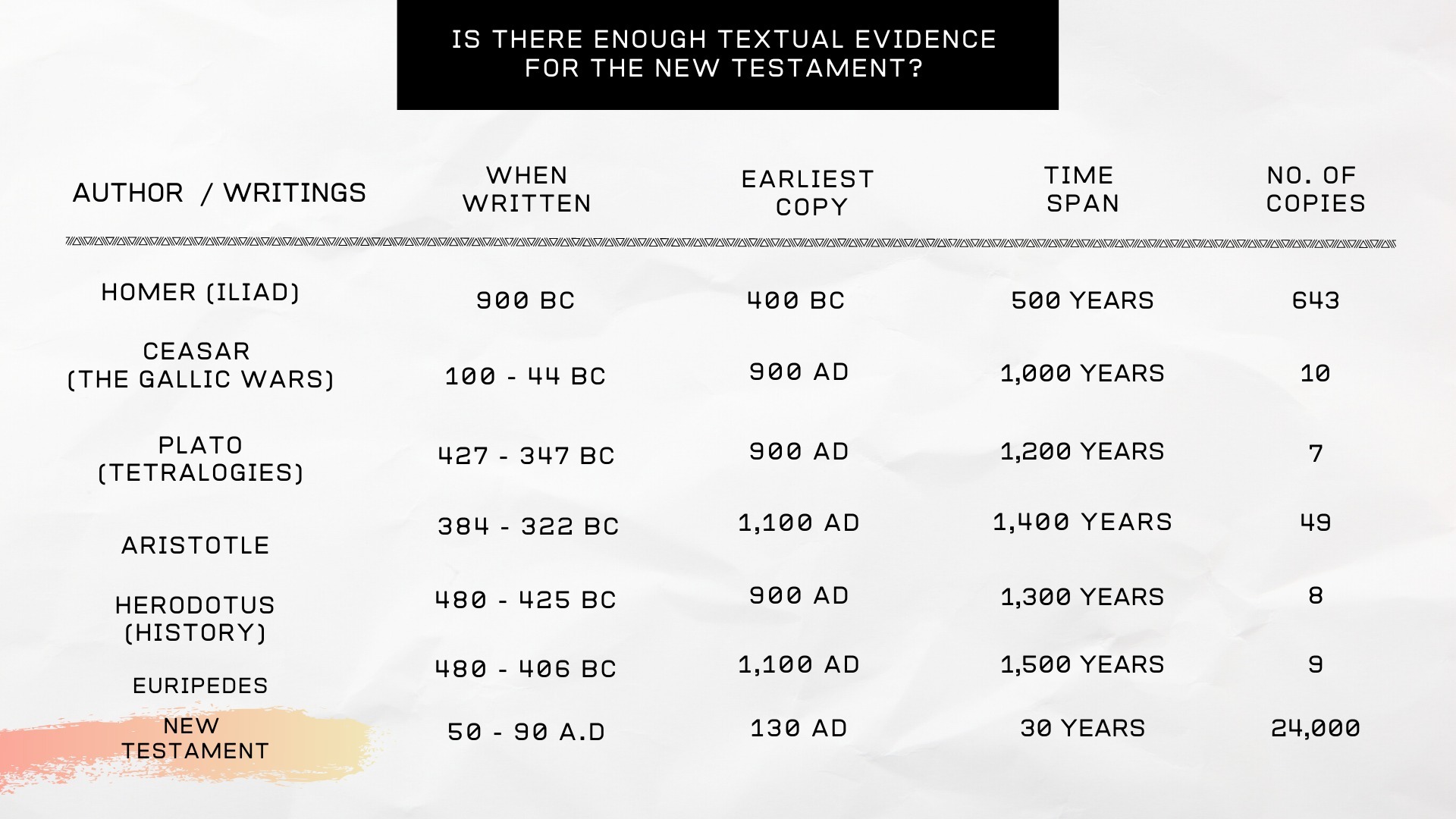Is there enough textual evidence for the New Testament?
In comparison with other ancient writings, the New Testament has significantly more textual evidence in its favor. Despite its age, the Bible has maintained remarkable accuracy and clarity in transmission largely due to its careful preservation and widespread circulation.
As a result, it has become one of the most reliable ancient documents in existence.
The Bible was written between 30 and 60 years after Christ’s death and during the lifetime of His apostles’ and followers’ lives. This means that the Bible was written by people who lived close to the time of Jesus and had direct knowledge of his life, teachings, and ministry.
This close proximity to Jesus’ life ensures the reliability of the gospel accounts. The earliest manuscript copy available, the John Rylands Papyrus (P52), dates to about 95-120 years after Jesus’ death.
This timeframe helps to ensure the accuracy of the Scriptures, since there were still people still alive during that period who would have been able to dispute any inaccuracies.
Moreover, since there is an exorbitant amounts of copies (about 24000 manuscripts) available, anyone trying to alter/modify any Bible verses would have found it extremely difficult. Additionally, this number of textual evidence far exceeds that of any other ancient document, allowing for extensive cross-checking and verification of the text’s consistency and accuracy.
Another significant aspect of textual evidence comes from lectionaries and the extensive quotations of the New Testament in the writings of the early Church Fathers. The wealth of these quotations is so extensive that the New Testament could nearly be reconstructed from them alone.
In conclusion, the textual evidence for the New Testament is overwhelmingly supportive. Its early manuscript evidence, the vast number of copies, and the detailed preservation in lectionaries and Church Fathers’ writings all contribute to its reliability as God’s Word. This makes the New Testament one of the most well-supported and credible documents from antiquity.
The Bible is God’s word, and we can trust it to be accurate.
Refer to the chart below for a comparison of the New Testament scriptures with other ancient manuscripts. (This chart was adapted from “Evidence that Demands a Verdict” by Josh McDowell, 1979, pages 42 and 43.)

